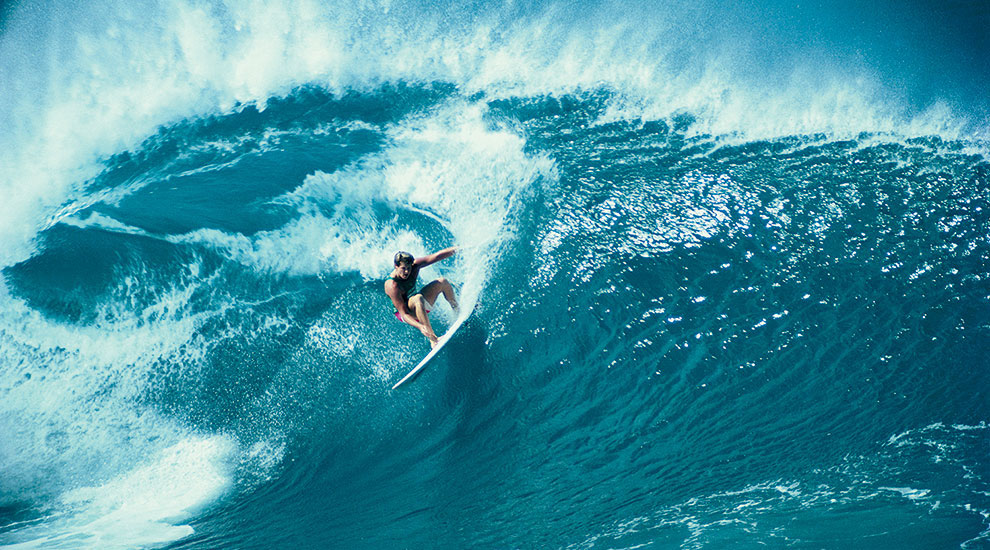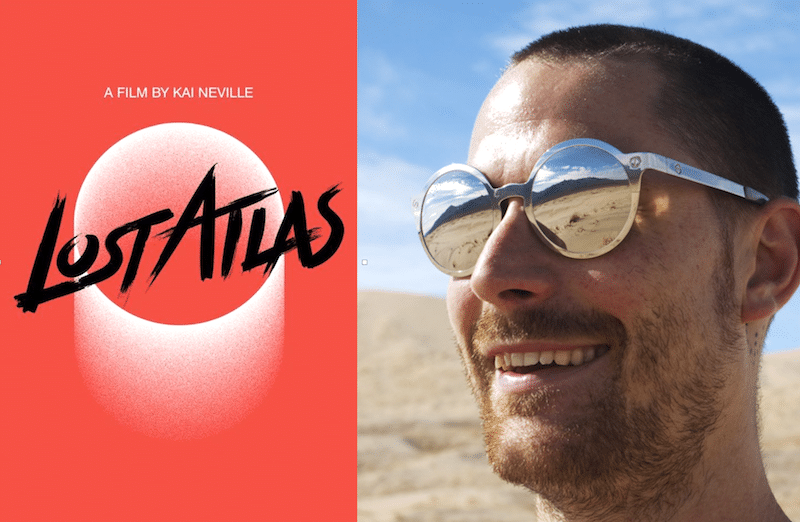Surf historian reflects on the too-brief career of the late Ronnie Burns.
If you were around in the late eighties you might’ve thrilled to a tall, blond, white guy lashing Pipeline alongside Derek Ho and Johnny-Boy.
Billabong paid him to decorate his board in their stickers and feature in their Jack McCoy movies. And then, somewhat mysteriously, after a motorbike crash in the hills behind the North Shore he was found dead, aged twenty seven.
According to Matt Warshaw, the man singlehandedly cataloguing surfing’s history and whom you should support with his three-bucks-a-month subscriber deal, Ronnie is a man who deserves a re-issue.
Come and be reborn in the eighties.
BeachGrit: I saw on your fabulous EOS a post on Ronnie Burns, the late, great haole Pipe surfer. Real hard to believe but it’s been almost thirty years since he died in a moto crash. He was quite a name wasn’t he, in the eighties?
Warshaw: At the end of 1989, right before I left SURFER and maybe six months before Ronnie Burns died, I asked all the hot Pipe surfers to give me a list of their top 10 Pipe riders. Added all the numbers up. Derek Ho came out on top, Ronnie next, then Tom Carroll, Gerry Lopez, and Johnny-Boy Gomes. Gentlemen can quibble, but nobody’s going to gainsay that list. Ronnie is thought of today, if he’s thought of at all, as a Pipeline guy, but what I remember best about him is that was the most complete North Shore surfer. Him and Derek. Ronnie killed it at Waimea, for example. Did airs at Rocky Point. Sunset, the only backsider who who had his number was Tom Carroll.
Six months before Ronnie Burns died, I asked all the hot Pipe surfers to give me a list of their top 10 Pipe riders. Derek Ho came out on top, Ronnie next, then Tom Carroll, Gerry Lopez, and Johnny-Boy Gomes. Gentlemen can quibble, but nobody’s going to gainsay that list.
Oweee, and how about that bow-legged style!
I posted a shot of Ronnie on Instagram and somebody remarked that Ronnie was the last white guy to surf like a Hawaiian, which is so true.
Billabong threw a bit of cash at him, took him on surf movie trips with Jack McCoy. Where did he fit in the surf star themes of the time?
He didn’t fit in at all. Or more like, he didn’t bother. Ronnie wasn’t anti-anything, he just did not give a shit about trade shows, or winning contests, or getting the cover.
Y’ever meet him?
Just the one time, when I interviewed him. Big guy, 6’ 2” or something, nice, kinda bland — or bland when talking to a magazine geek he just met a few minutes ago. Jack McCoy was telling me last week that Ronnie was really funny when you got to know him. My impression was that he was super confident in his abilities, but not at all cocky. Confident in his surfing, and in his choice to not run after the spotlight.
He was quite the anomaly at Pipe. Tall, white, as opposed to, say, Derek Ho, small, beautiful honey skin. Was that a prob for Ron, the white bit? Or was this a belle epoch when skin didn’t matter so much?
No problem. Boscoe Burns, his dad, was a famous glasser, worked for Hobie and Phil Edwards, everbody loved and respected Boscoe. The Burns family landed in Hawaii when Ronnie was just four, so he grew up there, lots of Hawaiian uncles and such. Ronnie was tight with the Ho brothers, so no worries.
Are there any single waves of Ronnie’s that are remembered?
No single wave, but Ronnie was famous for being the guy who sat furthest out and deepest, especially at Pipe. He was incredibly patient, which I think is such an odd trait for a guy in teens and early 20s. The total opposite of somebody like Tom Carroll, who would ride 20 waves an hour to Ronnie’s three waves.
Ronnie was famous for being the guy who sat furthest out and deepest, especially at Pipe. He was incredibly patient, which I think is such an odd trait for a guy in teens and early 20s.
What were the circumstances surrounding his death? A moto crash? Got lost and died of hypothermia?
A couple months after Ronnie died, Boscoe and Judy Burns, Ronnie’s parents, wrote a letter to Surfing magazine explaining that it wasn’t the motorcycle crash itself that killed him, but heat stroke. He was riding a valley trail, I think it was above Kawela Bay, by himself, on his way to meet Derek Ho. This was in July. The medical examiner told Burns’ family that Ronnie had fallen, couldn’t get his bike re-started, then started walking down a dry creek bed and died of heat stroke. It was originally reported that Ronnie had first fallen off his bike, then fell off a cliff. Boscoe and Judy wanted people to know that wasn’t the case.
Was there a big paddle-out for Ronnie?
Not sure how big it was. But I recall that Boscoe had saved Ronnie’s first board, an old longboard, and he used it to paddle his son’s ashes out to Pipeline. He wanted Ronnie’s first and last ride to be on the same board.
Anyone still talk about Ronnie apart from you, us? Or have the tides of time washed his memory away?
Right after the original hardcover of Encyclopedia of Surfing was published, in 2003, somebody pointed out that Ronnie didn’t have an entry. I was mortified. I’d spent months working out this master list, checking and re-checking it to make sure I didn’t forget anybody, and I fucking forgot Ronnie Burns. Just blew it. The reason the paperback version came out so quickly after the hardcover was so I could get Burns in there.









